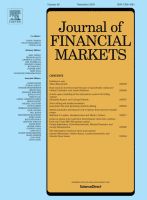Recently, the Academic Director of Master of China Studies (MCS), Dr. Wenyu Zhou and his collaborators' paper "Macroeconomics matter: Leading economic indicators and the cross-section of global stock returns" was published online in the Journal of Financial Markets. The paper suggests new evidence for the important role of macroeconomic indicators in stock market yield forecasting.

Journal of Financial Markets publishes high-quality theoretical and empirical research in the financial field, including asset pricing, investment, capital and securities markets, and is recognized as an international authoritative journal in the field. Of the 500 manuscripts submitted each year, less than 40 are accepted by JFM. The acceptance rate is less than 10%. This is the third academic paper that Dr. Zhou published in this journal after working in ZJU.

In the paper, the research team used more than six decades of data from 39 countries around the world to investigate the predictive power of the OECD's comprehensive leading economic indicator (CLI) for national stock markets. The article found that changes in the combined leading economic indicators can significantly predict future stock market yields in countries: monthly stock market yields in the top 20% of CLI index growth rates are 1.43% higher than in the bottom 20% countries, and this excess return cannot be explained by existing asset pricing models. Based on this finding, the article designs investment strategies based on open-ended index funds from different countries.
The following is an abstract of the paper:
Leading economic indicators assist in forecasting future business conditions. Can they also predict aggregate stock returns? To answer this question, we examine six decades of data from 39 countries. Short-term changes in the composite leading indicator (CLI) positively correlate with future stock returns in the cross-section. The quintile of markets with the highest CLI increase outperforms the quintile with the lowest CLI change by 1.43% per month. The predictive power of the CLI survives multiple robustness checks and cannot be absorbed by established risk factors. Our findings imply an exploitable investment strategy that can be pursued with exchange-traded funds.

